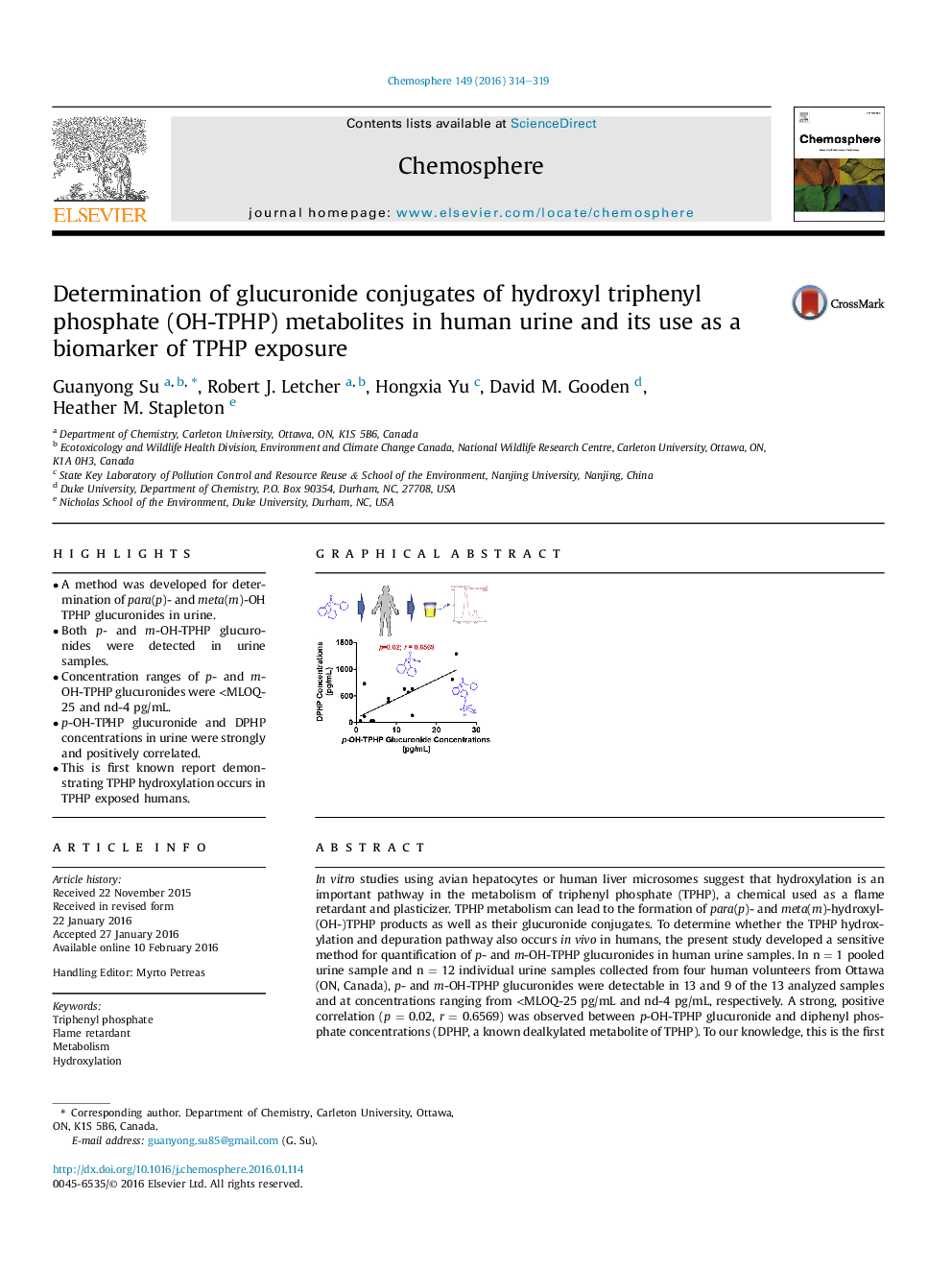| Article ID | Journal | Published Year | Pages | File Type |
|---|---|---|---|---|
| 4407891 | Chemosphere | 2016 | 6 Pages |
•A method was developed for determination of para(p)- and meta(m)-OH TPHP glucuronides in urine.•Both p- and m-OH-TPHP glucuronides were detected in urine samples.•Concentration ranges of p- and m-OH-TPHP glucuronides were In vitro studies using avian hepatocytes or human liver microsomes suggest that hydroxylation is an important pathway in the metabolism of triphenyl phosphate (TPHP), a chemical used as a flame retardant and plasticizer. TPHP metabolism can lead to the formation of para(p)- and meta(m)-hydroxyl-(OH-)TPHP products as well as their glucuronide conjugates. To determine whether the TPHP hydroxylation and depuration pathway also occurs in vivo in humans, the present study developed a sensitive method for quantification of p- and m-OH-TPHP glucuronides in human urine samples. In n = 1 pooled urine sample and n = 12 individual urine samples collected from four human volunteers from Ottawa (ON, Canada), p- and m-OH-TPHP glucuronides were detectable in 13 and 9 of the 13 analyzed samples and at concentrations ranging from Graphical abstractFigure optionsDownload full-size imageDownload as PowerPoint slide
